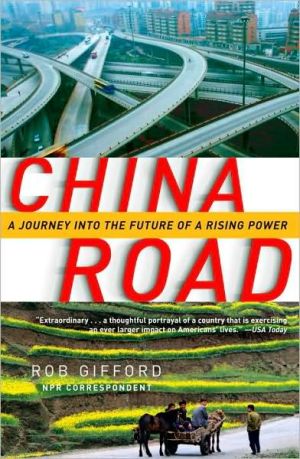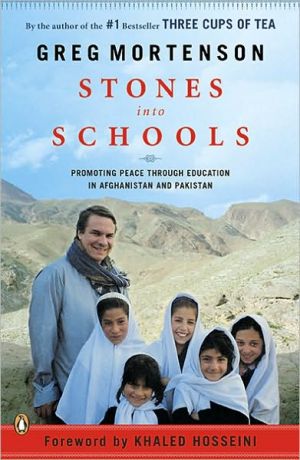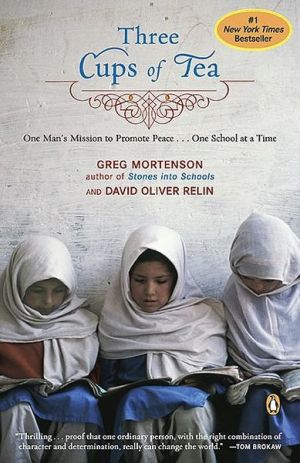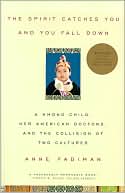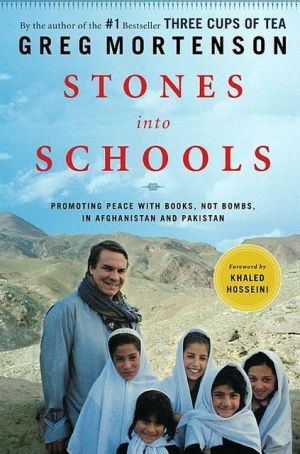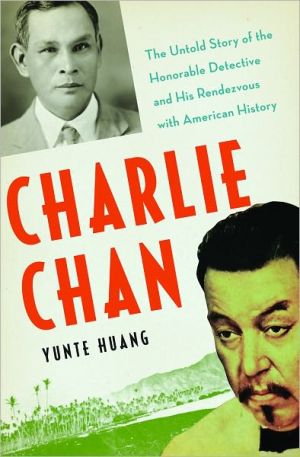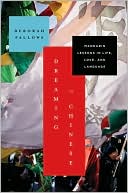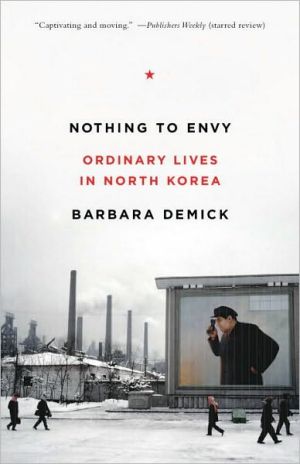China Road: A Journey into the Future of a Rising Power
Route 312 is the Chinese Route 66. It flows three thousand miles from east to west, passing through the factory towns of the coastal areas, through the rural heart of China, then up into the Gobi Desert, where it merges with the Old Silk Road. The highway witnesses every part of the social and economic revolution that is turning China upside down.\ In this utterly surprising and deeply personal book, acclaimed National Public Radio reporter Rob Gifford, a fluent Mandarin speaker, takes the...
Search in google:
National Public Radio's Beijing correspondent Rob Gifford recounts his travels along Route 312, the Chinese Mother Road, the longest route in the world's most populous nation. Based on his successful NPR radio series, China Road draws on Gifford's twenty years of observing first-hand this rapidly transforming country, as he travels east to west, from Shanghai to China's border with Kazakhstan. As he takes the reader on this journey, he will also take us through China's past and present while he tries to make sense of this complex nation's potential future. The Washington Post - Susan L. Shirk Gifford's book is an account of a two-month trip he took along Route 312, which spans the country from east to west like an oriental Route 66. He draws on the extensive knowledge he acquired during six years of reporting from Beijing for National Public Radio. Although not as adventurous a traveler or as vivid an observer as Colin Thubron (whose Shadow of the Silk Road covers some of the same route), Gifford weaves into his travelogue a crash course in Chinese history, geography, economy and society. To him, China is a land of contrasts, and "for every fact that is true…the opposite is almost always true as well, somewhere in the country."
Chapter 1. The Promised Land\ The magnetic levitation train that links Shanghai’s gleaming new Pudong Airport with the center of the city glides out of the airport station and within about two minutes has reached 270 miles per hour. Billboards flash past, almost unreadable. Suspended magnetically along a track that runs some fifty feet above the ground, the train scythes toward the center of China’s most modern city. The landscape is surprisingly American—sprawling, low-rise, newly built. The gray bullet leans lazily to the left as it shoots over one of Pudong’s main freeways, past cavernous supermarkets and rows of polished new pink and white apartment blocks.\ The maglev, as it is known, cost $1.2 billion to build and is the first commercially run train of its kind in the world.\ Six weeks before reaching Starry Gorge and the Gobi Desert, I had arrived by plane in Shanghai from Beijing to start my three-thousand-mile road trip along Route 312. I’d been too busy to make many preparations and had only a faint idea of whom I might talk to when I got here.\ Almost before the maglev’s twenty-mile journey has begun, it has ended. The train eases into the terminus, not far from the new jungle of high-rise buildings that make up downtown Shanghai. I look at my watch as I heave my backpack out onto the platform. “Bu cuo. Not bad.” I nod to the smartly dressed female ticket collector standing beside the door. “Eight minutes.”\ “Seven minutes, twenty seconds,” she replies without smiling.\ The streets outside the terminus are a cacophony of noise and motion. There is an intangible feel in Shanghai, an urgency, a hope and optimism that hangs in the air all around you from the minute you arrive. People are pushing forward, with their feet and in their heads, building a future, building a country, moving toward some distant, unseen goal.\ I’ve chosen to stay at the slightly down-at-heel but gloriously historic Astor House Hotel, the first foreign hotel to be established in Shanghai, in 1846. The hotel sits at one end of the Bund, the city’s original main thoroughfare, which runs along the Huangpu River. The Bund has for more than 150 years been the interface between Shanghai and the arriving yang ren, or Ocean People, as foreigners have always been known.\ The Astor House Hotel has witnessed the whole sweep of China’s emergence into the modern world, from English opium running in the 1840s through the tea dances of polite society in the 1920s to the excesses of Maoist China in the 1960s. The Art Deco ceilings are high, the creaky floorboards are original, and you could drive a small car down its stairways. Ulysses S. Grant stayed here on his world tour in the 1870s. Charlie Chaplin and George Bernard Shaw and Albert Einstein stayed here too, when Shanghai was the place to visit in Asia in the early part of the twentieth century. Urban myth has it that, in the nineteenth century, you could order opium from room service at the Astor House, and that Zhou Enlai, who would go on to be China’s premier, hid in the Astor House when he was a Communist agitator in the 1920s. Shanghai, more than most cities, is suffused with urban myths.\ Staying here is also personally nostalgic for me. It was the first hotel I ever stayed at in Shanghai, in the summer of 1988. After my year’s language study, I was joined by a beautiful classmate from my university in England. We were going to travel around China for three months by train before taking the Trans-Siberian Railroad back through the Soviet Union to Europe.\ We stayed in the dollar-a-bed dorms for backpackers at the Astor House (which still exist) that baking hot summer. We wandered the streets, getting a feel for the new Shanghai as the city slowly crept out of its Maoist cocoon. We sat up late into the night, out on the hotel’s old wood-paneled balcony, trying to work out China, the universe, and, of course, ourselves. That beautiful classmate is now my wife and has just spent the last six years with me in China. As I lift my backpack up to my room alone, I can’t help smiling at her in the faded mirror of the rickety old elevator.\ Before going for dinner, I pull on my shorts and running shoes and head out for a jog. If this is a time of change for China, it is also, I hope, a time of change for me, and more specifically for my waistline. I’m trying to get rid of the ten (okay, nearer fifteen) extra pounds that six years of Chinese food have deposited about my person. This need has become more urgent because of what has been happening—or not—on the top of my head. After a relatively hirsute youth, the spiteful Hair Gods—curse them—have begun to pull the rug from under (and over) me. So, resolving not to reach forty both fat and bald, I’ve rashly signed up to run the Beijing Marathon, all 26.2 miles of it, in the fall. I’d begun training a few miles a day before setting off from Beijing and am hoping to increase the daily distance as I travel throughout the summer, then run the marathon before finally leaving for London.\ I set out with great intentions, despite the heat, but make the mistake of running along the pedestrian walkway between the Bund and the river. The area is so crowded that the jog quickly becomes a game of human pinball. One of the occupational hazards of living in China is that there is not much elbow room anywhere (until you reach the Gobi Desert). I attempt a sweaty slalom through the crowd for about two-tenths of a mile, then decide to leave the remaining twenty-six for the morning and stagger ingloriously back to the hotel for a shower.\ My first evening in Shanghai is spent on the terrace of a restaurant called New Heights. It sits atop Three on the Bund, one of the row of venerable colonial buildings that have recently been renovated, a few hundred yards along the waterfront from my hotel. Three on the Bund contains the new flagship Giorgio Armani store, an art gallery, an Evian spa, and four swanky restaurants, including New Heights, at the very top, with its open-air terrace suspended seven stories above the road. From the terrace you have one of the most intoxicating restaurant views in the world, looking down on the ten-lane highway of the Bund and across the Huangpu River at the extraordinary, newly built district of Pudong.\ The word Bund comes from an old Hindi word meaning an embankment and was brought by the British from India. The area around the Bund was where the first warehouses (called “go-downs”) were built by the opium traders who flocked to China in the mid– nineteenth century to make their fortunes.\ The sun that the opium traders watched setting over the Huangpu is setting for me as I arrive on the terrace with my beer. A gentle, warm breeze floats in off the river, wafting in the same scent of opportunity that it did more than 150 years ago. The go-downs and the junks, the clipper ships and the opium dens have given way to the shiny glass and metal of a twenty-first-century city. Fluttering from several of the neighboring colonial buildings is the red flag of the Chinese Communist Party, drowned out by the buzzing, capitalist scene below. The clock tower of the old waterfront Customs House, built in 1925 and modeled on Big Ben in London, strikes the hour with Chairman Mao’s favorite tune, “The East Is Red.” But the East is no longer red. The plumage of capitalism is multicolored, and the view along the Bund is a blaze of green, blue, and white light, screaming out an elegy to Marxist economics. News reports say that China is suffering a severe shortage of electricity, but you wouldn’t know it from the wattage that sizzles into the hot summer night sky here.\ Threading its way through the midst of all this is the river itself, the dark, slow-moving Huangpu, dribbling down the chin of the Yangtze Delta from the mouth of the mother river itself. Three massive barges, laden with coal, are pushing upstream, so low in the water that they almost look like submarines. A larger cargo ship blasts out its horn, as if to remind the postmodern diners high above the Bund that the Industrial Revolution is still taking place down below.\ Seated among the many foreign businessmen, the wealthy Chinese diners at New Heights are the new elite, who have gained a taste for miso-glazed tuna, zabaglione, and Pinot Noir. People talking about mergers and acquisitions, killer applications, and streaming TV on their cell phones. People who show how far China has come in thirty years of economic reform. Trendy, wealthy, modern Chinese people, greeting one another over cocktails, joking and laughing with all the confidence of a room full of wealthy New York diners. From the kowtow to the air kiss in less than a century.\ Ask any of these people about China’s future, and there would be no question. Their natural Chinese modesty might prevent boasting or gloating about China’s potential greatness, but for the nouveaux riches of Shanghai, the future is bright.\ New York City makes a good comparison. Beijing is Washington, D.C., a capital city, too obsessed with politics to be at the forefront of commerce. Shanghai is Manhattan, although in many ways it is Manhattan in about 1910—a boomtown with immigrants flooding in. There are roughly 13 million people in Shanghai (New York in 1910 had about 5 million). As in New York a hundred years ago, many of these people have just arrived from somewhere else.\ There is no Statue of Liberty to welcome them here, but as I stand looking out across the corrugated river to the Elysian fields of Pudong, it seems to me there should be. Or at least a Statue of Opportunity. Since the city started growing as a foreign trading post, in the 1840s, Shanghai has always been the Mother of Exiles. The difference from New York is that here the exiles are internal, not coming from an old world to build a new but trying to turn the old world into a new one, and that is a much harder task. They are refugees not from ancient lands across the ocean, from Dublin or Kiev or Palermo, but from inland. They are huddled masses from Hefei and Xinyang and Lanzhou, the cities I will be visiting on my journey along Route 312.\ One shiny new office tower on the other side of the river has become a huge TV screen, with advertisements and government propaganda alternately lighting up the entire side of the building, one message replaced five seconds later by another.\ Welcome to Shanghai. Tomorrow will be even more beautiful.\ 1,746 more days until the Shanghai World Expo.\ Sexual equality is a basic policy of our country.\ Eat Dove chocolate.\ After dinner, I wander slowly back down the Bund, avoiding the legion of beggars loitering at the door of the restaurant, heading across the road to the walkway on the waterfront where I had tried to jog earlier in the evening. You can keep Fifth Avenue, and Piccadilly, and the Champs-Élysées. This is my favorite urban walk in all the world. There is nothing quite like it, especially on a hot summer evening. The energy, the atmosphere, the hope, the possibilities, the past, the future, it is all here. Downtown Shanghai makes you feel that finally, after centuries of trying, China may be on the edge of greatness once again.\ Thousands of tourists, Chinese and Western, are milling along the pedestrian walkway, their flashbulbs popping like fireflies in the half-light. The Westerners are doing what Westerners always do in Shanghai, trying to re-create the past as they snap photos of the old colonial buildings. The Chinese are also doing what Chinese people always do, trying to escape the past as they snap their photos in the opposite direction, gazing out across the river toward the dazzling ziggurats of Pudong.\ Shanghai had been slow to emerge from its socialist slumber in the 1980s. It did not really take off until a group of the city’s politicians took over at the top of the Communist Party after the crushing of the pro-democracy demonstrations in Tiananmen Square in June 1989. Then, in the 1990s, Shanghai’s economy soared, as the hope and idealism of the 1980s were consumed upon the bonfire of nihilism and cash.\ Pudong was just old docks and paddy fields until the early 1990s. Now it has come to embody the modern Chinese zeitgeist, two hundred square miles of offices, apartments, and shopping malls to add to the superlatives of a city that already boasts the world’s fastest train, the world’s highest hotel, and some of the world’s tallest buildings. When you look out at Pudong, it’s easy to believe that the nine most powerful men in China (who make up the Standing Committee of the Communist Party Politburo) are all engineers.\ I walk the length of the Bund, then cross back under the road, past the buskers and the beggars in the underpass, toward the entrance of the grande dame of the Bund, the Peace Hotel. Formerly known as the Cathay, it was built in 1929 by the scion of one of prewar Shanghai’s famous families of Iraqi Jews, the real estate magnate Victor Sassoon. The center of social gravity shifted in the 1930s from the Astor House around the corner to the Cathay. Its jazz was even more jumping, its rooms even more Art Deco a-go-go. Noël Coward, struck down by flu during a stay in 1930, wrote Private Lives in one of the suites at the Cathay.\ “Roleksu, Roleksu.”\ A voice emerges from the shadows, uttering the normal greeting of the hucksters who loiter outside the Peace Hotel as they flash fake watches from their pockets for your perusal. China is, of course, the world center for fake goods. Gucci bags, Rolex watches, Ralph Lauren shirts are all yours for a few bucks. If it’s clear you don’t want any of these, the pitch suddenly changes direction.\ “Ladies bar, ladies bar,” whispers the man in a broken English without apostrophes. “You want go ladies bar?”\ Communist orthodoxy, and with it Communist morality, have been lifted, and anything goes now. Usually, a few choice words in Chinese persuade the hucksters that you’ve been here before and you really don’t want any of their fake goods or seedy nightclubs. But tonight, as this particularly persistent guy goes through the list of what he has, and I respond with a crisp bu yao (not want!) to each one, he eventually comes up with one I haven’t heard before.\ “Gol-fu,” he says. “Gol-fu.”\ I stop to look him squarely in the face and can smell the garlic on his breath. “What?”
Introduction: The Mother Road xiiiThe Promised Land 3Dislocation 14Things Flow 28The Unfinished Revolution 41"A Single Spark Can Light a Prairie Fire" 51Silicon Valley 64"Women Hold Up Half the Sky" 76"Put the People First" 86Power 97The Hermit of Hua Shan 112Elvis Lives 125The Last Great Empire 140Monks and Nomads 153No Longer Relying on Heaven 165"We Want to Live!" 177Respect 194The End of the Wall 205The Caves of a Thousand Buddhas 215Endurance 227The Great Wall of the Mind 236"China Is a Colonial Power" 248From Sea to Shining Sea 259A Road Is Made 273Acknowledgments 297Select Bibliography 301Index 305
\ Susan L. ShirkGifford's book is an account of a two-month trip he took along Route 312, which spans the country from east to west like an oriental Route 66. He draws on the extensive knowledge he acquired during six years of reporting from Beijing for National Public Radio. Although not as adventurous a traveler or as vivid an observer as Colin Thubron (whose Shadow of the Silk Road covers some of the same route), Gifford weaves into his travelogue a crash course in Chinese history, geography, economy and society. To him, China is a land of contrasts, and "for every fact that is true…the opposite is almost always true as well, somewhere in the country."\ —The Washington Post\ \ \ \ \ Library JournalNPR's Beijing bureau chief for six years, Gifford saw just how much China is changing as he traveled along its famed Route 312 from Shanghai to the Kazakhstan border. Copyright 2007 Reed Business Information.\ \
